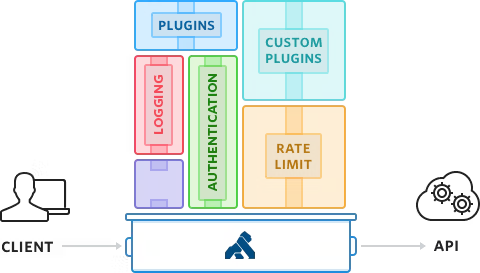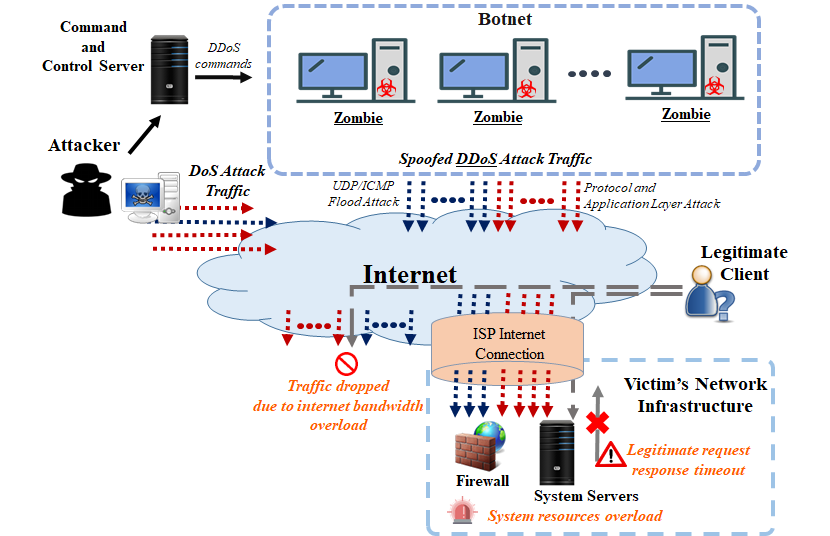Rate Limiting
Rate limiting is a technique used to control the rate at which requests are made to a network, server, or other resource. It is used to prevent excessive or abusive use of a resource and to ensure that the resource is available to all users.
Rate limiting is often used to protect against denial-of-service (DoS) attacks, which are designed to overwhelm a network or server with a high volume of requests, rendering it unavailable to legitimate users. It can also be used to limit the number of requests made by individual users, to ensure that a resource is not monopolized by a single user or group of users.

There are several ways to implement rate limiting. One common approach is to set a maximum number of requests that a user or client can make within a given time period, such as a minute or an hour. If the user exceeds this limit, their subsequent requests may be denied or delayed until the rate limit is reset.
Rate limiting can also be implemented at the network level, by setting limits on the number of requests that can be made to a specific network resource or by limiting the overall rate of traffic on a network.
Why is rate limiting important?

Rate limiting is an important tool for managing network resources and ensuring the availability and performance of networks and servers. It is used widely on the internet and in other types of networks. Here are some key benefits of rate limiting.
Prevent DoS attacks
Rate limiting is often used to protect against denial-of-service attacks, which are designed to overwhelm a network or server with a high volume of requests, rendering it unavailable to legitimate users. By limiting the rate of requests, it is more difficult for an attacker to successfully execute a DoS attack.
Manage resource utilization
Rate limiting can help to ensure that a network or server is not overloaded by a high volume of requests, which can negatively impact performance and availability. By limiting the rate of requests, it is possible to better manage resource utilization, prevent resource starvation, and ensure that the resources are available to all users.
Prevent abuse
Rate limiting can be used to prevent a single user or group of users from monopolizing a resource and to ensure that the resource is available to all users. It can also be used to prevent users from making excessive or unnecessary requests, which can waste resources and impact the performance of a network or server.
Improve user experience
By limiting the rate of requests, it is possible to improve the user experience by reducing delays and improving the responsiveness of a network or server. This can be particularly important for applications that require real-time or near real-time responses.
Reduce costs
Rate limiting can help to avoid extra costs by preventing the overuse of a resource. If a resource is overloaded by a high volume of requests, it may require additional resources or capacity to handle the load, which can incur additional costs. By limiting the rate of requests, it is possible to reduce the demand on a resource and avoid the need for additional capacity.
Rate Limiting Techniques
There are several ways to implement rate limiting in Dynalight. One common approach is to set a maximum number of requests that a user or client can make within a given time period, such as a day, an hour, or a minute. If the user exceeds this limit, their subsequent requests may be denied until the rate limit is reset. Dynalight also allows you to set up rate limits for services in the exact same way. If the total number of requests to a service exceeds the specified limit for the interval, additional requests will be blocked.
Rate limiting can also be implemented at the network level, by setting limits on the number of requests that can be made to a specific network resource, by a specific IP address or by limiting the overall rate of traffic on a network. Dynalight can also be used to limit of block all traffic from certain geographies like Russia, North Korea or China for example.
Why is rate limiting important?
Rate limiting is an important tool for managing network resources and used to ensure the availability and performance of your infrastructure. It is used widely on the internet and in other types of networks. Here are some key benefits of rate limiting.
Prevent DoS attacks
Rate limiting offers great protection against denial-of-service attacks, which are designed to overwhelm a network or server with a high volume of requests, rendering it unavailable to legitimate users. By limiting the rate of requests, it is more difficult for an attacker to successfully execute a DoS attack.
Manage resource utilization
Rate limiting can help to ensure that a network or server is not overloaded by high traffic volumes. This would negatively impact performance and availability. By limiting the rate of requests, it is possible to better manage resource utilization, prevent resource starvation, and ensure that the resources are available to all users.
Prevent abuse
Rate limiting can be used to prevent a single user or group of users from monopolizing a resource and to ensure that the resource is available to all users. It can also be used to prevent users from making excessive or unnecessary requests, which can waste resources and impact the performance of a network or server.
Improve user experience
By limiting the rate of requests, it is possible to improve the user experience by reducing delays and improving the responsiveness of a network or server. This can be particularly important for applications that require real-time or near real-time responses, such as online gaming or voice-over-IP communication.